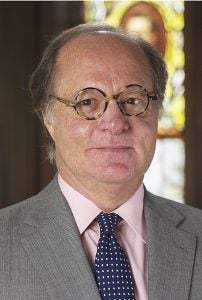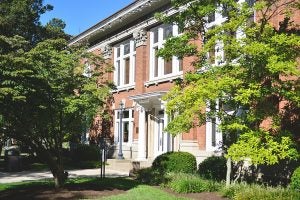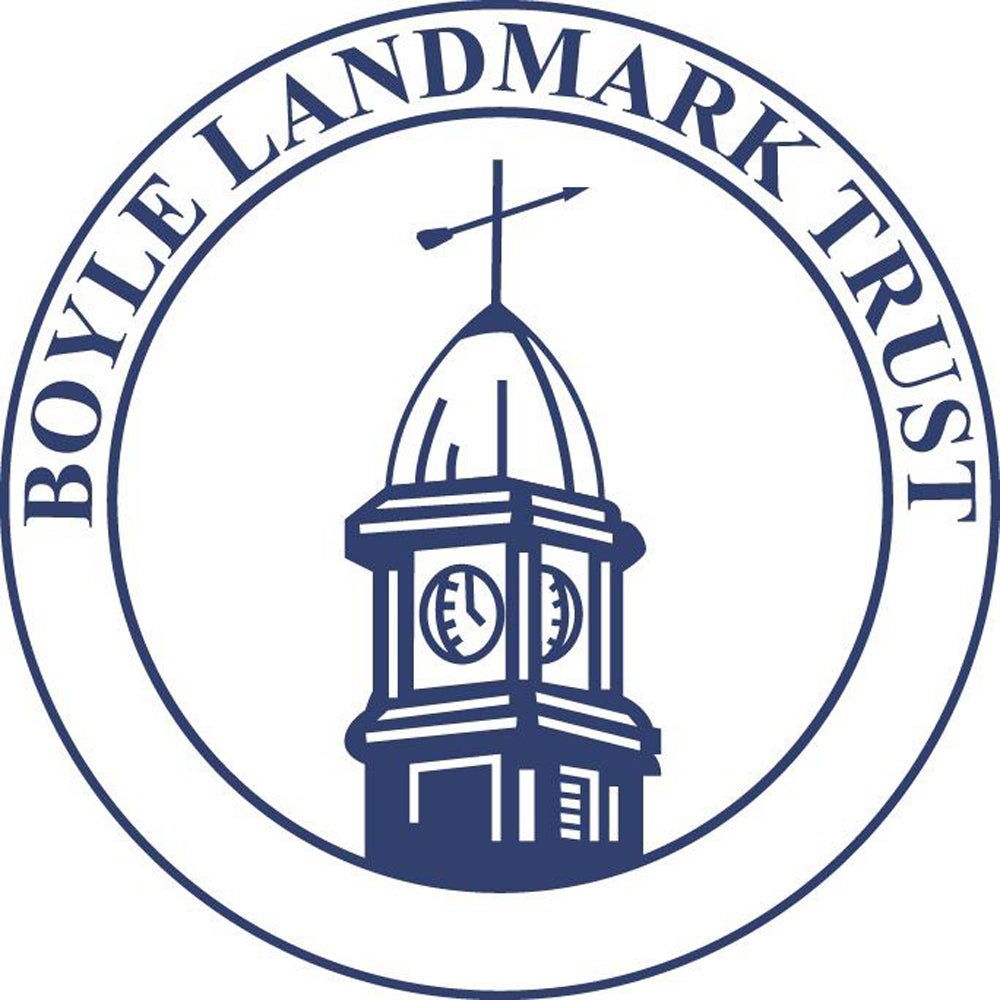Symposium to teach about Boyle Landmark Trust’s revolving fund for preservation
Published 10:39 am Tuesday, May 1, 2018
In recognition of Preservation Month, Boyle Landmark Trust is sponsoring a free, two-day public symposium in May to help explain what its newly formed revolving fund means to the community, and how it can benefit property owners as well as the county tax rolls. Leading the discussion will be Mark McDonald, president and CEO of the Georgia Trust.
According to board member Barbara Hulett, McDonald visited Danville two years ago at the request of the BLT and Heart of Danville to analyze if a revolving fund would be feasible here to help preserve historic properties on the brink of destruction.
After some research McDonald thought it was possible, so the BLT developed the Wendy G. Lewis Revolving Fund and is now ready to put it into action.
 On May 24 and 25, at the Carnegie Club building on Centre College campus, the BLT — in partnership with the Danville Architectural Heritage Board, City of Danville and Danville-Boyle County Convention and Visitors Bureau — is bringing McDonald back to talk about how historic properties can be legally protected from being destroyed, which would then make them viable properties on the tax rolls.
On May 24 and 25, at the Carnegie Club building on Centre College campus, the BLT — in partnership with the Danville Architectural Heritage Board, City of Danville and Danville-Boyle County Convention and Visitors Bureau — is bringing McDonald back to talk about how historic properties can be legally protected from being destroyed, which would then make them viable properties on the tax rolls.
The title of the free symposium is “Reuse. Reinvest. Revitalize.” It has been approved for continuing education credit for Certified Local Government officials.
BLT board chair Jacob Pankey said on the morning of May 24, the symposium will cover historic preservation tools and tactics — things like, “What are easements? What is the historic overlay? What is an architectural heritage board? What are local laws and regulations that could impact historic preservation?”
“The morning session is preservation 101,” Pankey said. “Actually, it’s a general topic of a lot of different areas and a lot of questions and answer opportunities.”
In the afternoon session, McDonald will explain cases studies of the Georgia Trust Revolving Fund, and how a similar revolving fund can benefit property owners and eventually could add to the county and city’s tax rolls by making some historic properties income-producing, instead of being condemned or abandoned. Pankey said this session would be beneficial for bankers, realtors, property owners and investors.
Later in the afternoon, a presentation will be given about future preservation projects in Boyle County. Hulett said they will discuss the selection process and criteria for a property to qualify for the BLT revolving fund.
On Friday morning, the symposium will wrap up at the Third Street Methodist Fellowship Hall, where there will be an informal question-and-answer period about how and who the revolving fund could benefit.
Pankey said the symposium is “not just a lecture, but a discussion.” He suggested those attending should be thinking of their questions now. He said questions can even be sent to the BLT so they can prepare their responses so that even more information can be shared quickly.

Photo by Centre College
The symposium isn’t for people wanting to learn how to make repairs on a piece of historic property, Pankey said. It’s more about how to be involved in historic preservation, the meaning of historic properties and what incentives are available for historic property owners to save their property for future generations.
Pankey said, “We have in Danville and Boyle a lot of potential historic properties that are either in danger of being torn down or condemned or in a position that doesn’t make them economically viable in our community.
“What a revolving fund can do, through a non-profit like the Landmark Trust, the property can be donated, purchased or an option can be put on one of these properties and the Boyle Landmark Trust then works to find a potential owner of that property.”
Pankey said the BLT can work with an owner whose historic property is endangered of being torn down or who wants to forever protect it from that fate, and purchase an easement. The BLT could make minor repairs and help the owner find a suitable buyer. After the purchase, the seller may donate a small portion of the revenue to the BLT revolving fund and the process could continue with other properties.
Hulett said easements they are talking about are basically conservation restrictions on the property. “Primarily, (a historic structure) could not be moved, torn down, all kinds of things if it is of real historic value that you don’t want to see defamed in any way, if you don’t want to see its character deminished in any way.”
Pankey said, “These (easements) are put into the deeds and the restrictions pass from owner to owner. … I believe they are safeguards to ensure (the historic buildings) are here long after we are gone.”
Hulett said the BLT revolving fund doesn’t currently have deep pockets. “Right now we couldn’t buy anything.”
But they can accept a historical piece of property or, “for instance, we were able to negotiate with somebody and put an option on (a property). They still own it, but in the meantime we’ve got it tied up.”
Then the BLT could use their revolving funds to do a few minor repairs, like fixing a door or replacing a window, “in order to better sell for the owner. The owner gets the money out of it,” Hulett said. “They (the seller) might be willing to give us back a donation or give money back for what we did for them. But we’re not guaranteed of that. We have to be willing to lose some money. We have to be willing to do that and invest in the concept,” Hulett said.
The revolving fund is here to help blighted historic neighborhoods, Hulett said.
Pankey agreed. “It could be a cure for a dilapidated, rundown neighborhood … It’s an alternative to neglect.”
Pankey said, “Nothing would be better for Danville right now than to have a lot of cottages to be rented for Airbnb.”
Properties can also be adaptively reused, which is what McDonald will also address during the symposium.
She said the historical properties don’t have to be single family homes, but could have the potential to be a studio of some type or a business space.
Hulett said the revolving fund “is a progressive mission for the future of Boyle County and Danville because what we have here is so valuable. We can’t afford not to do it.”
“Our historic identity is through our buildings,” Pankey said. “If we lose those, we become like ‘Anywhere U.S.A.’ That is one of our key defining characters is these properties.”
IF YOU GO
The Boyle Landmark Trust symposium, “Reuse. Reinvest. Revitalize.” will be May 24-25. The schedule is as follows:
Thursday, May 24
Centre College Carnegie Clue building
9 a.m.-12 p.m. — Historic Preservation Tools and Tactics
12-1 p.m. — Lunch ($20 RSVP by calling (859) 691-0689 or go to www.boylelandmarktrust.org)
1-3 p.m. — Case studies from the Georgia Trust
3:15-5 p.m. Future Preservation Projects in Our Area
Friday, May 25
Third Street Methodist Fellowship Hall
8-10 a.m. — Light breakfast and informal discussions
MARK C. MCDONALD
Mark C. McDonald has served as President and CEO of The Georgia Trust since June 2008. Since that time, The Georgia Trust has dramatically improved its budget performance and extended its programs and revolving fund activities.
Mr. McDonald has nearly 30 years of professional involvement in historic preservation and a strong business background. Mark received a Bachelor of Arts degree with a double major in history and English from Emory University and a law degree from the University of Georgia School of Law.
He has served as the executive director for three preservation organizations in the Southeast, including the Historic Salisbury Foundation in North Carolina from 1986-1990, the Mobile Historic Development Commission in Mobile, Alabama from 1990-1998 and most recently, Historic Savannah Foundation since 1998. During Mark’s tenure at Historic Savannah Foundation, the organization became a strong advocate for quality urban design; reinvigorated its revolving fund program by selling nearly 75 endangered properties with preservation easements and built the fund’s capital from $30,000 to approximately $1 million; and helped gain architectural design review in three additional historic districts.







